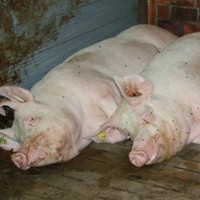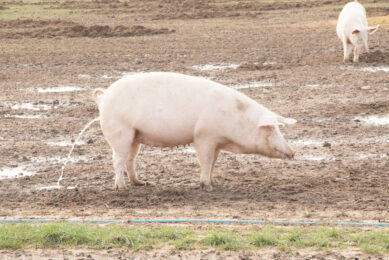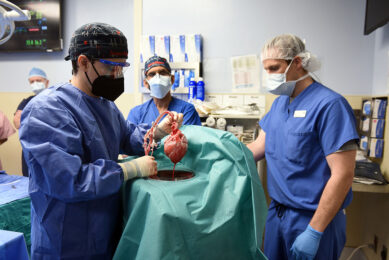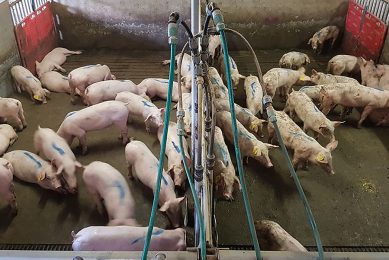Swine dysentery causing problems in the UK

Like most countries, the UK just manages to overcome one disease hurdle, in the shape of PCV2, to then find another one looming, in this case, Swine Dysentery. Swine Dysentery, or ‘bloody scours’, is not a new disease but is currently causing big problems in the UK pig herd.
This bacterium can survive 60 days in manure-contaminated puddles, plus carrier pigs can shed the bug for up to 90 days but show no clinical signs. It can cost £6-12 (€6.50-12.90) per finishing pig and control costs £4-5 (€4.30-5.40) per pig. Worryingly, resistant strains are appearing and in fact some straw-based finishing operations have had to close down due to unsustainable losses.
There has been a big swing towards two-site production in the UK, with weaners being trucked from mainly outdoor based East Anglian producers to finishers located in North England and Lincolnshire. Hauliers move these pigs in the afternoons having spent the mornings shipping slaughter pigs into the abattoirs. If the wagons are not cleaned out properly after hauling infected slaughter pigs then weaners can pick up the bacteria and a cycle of infection is now established.
What to do to prevent SD spread?
•©Multiple pick-ups, where a truck picks up pigs from several units, make the situation worse. The haulier should not, under any circumstances, enter the unit.
•©If unit staff are involved in loading pigs they should change into ‘off-site’ clothing and boots.
•©After the pigs are loaded they then get changed back into their ‘on-site’ apparel.
•©The end of the loading ramp should ideally slope away from the unit at an angle of 5 degrees so that washing water runs away, not into, the unit.
•©In terms of biosecurity, Gemma Morton, from Garth Partnership, Driffield, UK, suggests that grower/finisher units should seriously consider having two loading ramps, one for incoming weaners and a separate one for outgoing pigs.
•©If pigs are not responding to medication then emptying, thorough disinfection and resting are the only options for grower/finisher units.
•©In the case of farrow-to-finish units, a partial or complete depopulation/repopulation© along with a rigorous cleaning programme will be necessary. A complete depopulation is the most effective but means no income for 4-9 months. Ideally timing should be such that the cleaning can be carried out during the summer when warm and dry conditions should prevail, for maximum cleansing effect. The unit should then be repopulated with dysentery-free stock.











